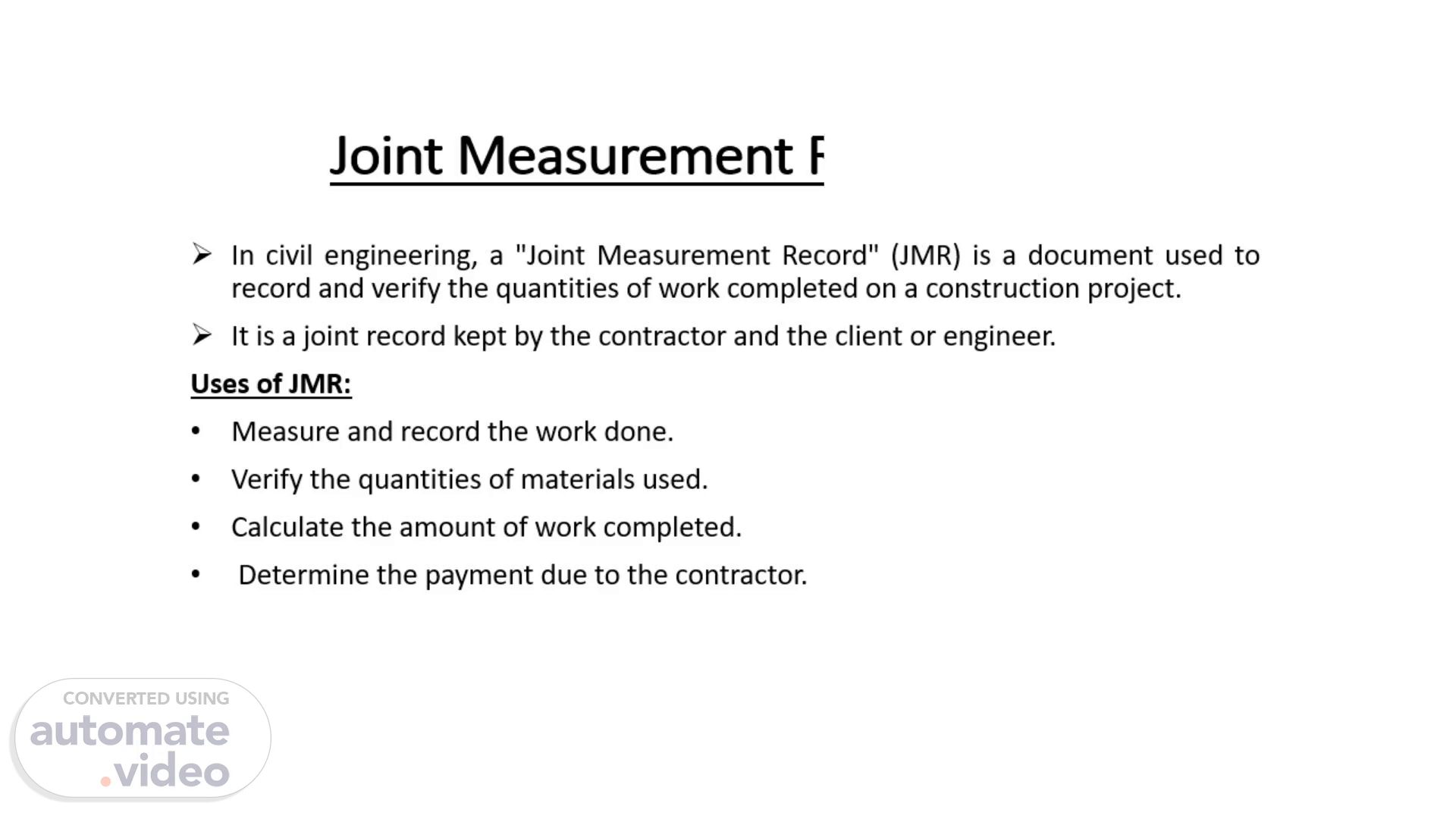
Joint Measurement Record (JMR)
Scene 1 (0s)
Joint Measurement Record (JMR). In civil engineering, a "Joint Measurement Record" (JMR) is a document used to record and verify the quantities of work completed on a construction project. It is a joint record kept by the contractor and the client or engineer. Uses of JMR: Measure and record the work done. Verify the quantities of materials used. Calculate the amount of work completed. Determine the payment due to the contractor..
Scene 2 (20s)
The JMR typically includes: Description of the work done. Quantities of materials used. Unit rates and prices. Calculated values and totals. Signatures of the contractor and client/engineer. The purpose of a JMR is to: Ensure accurate measurement and payment for work done. Prevent disputes over quantities and payments. Provide a transparent record of the work completed. Facilitate efficient project management and cost control. By maintaining a Joint Measurement Record, civil engineers, contractors, and clients can ensure a fair and accurate accounting of the work completed, and make informed decisions about project progress and payments..
Scene 3 (47s)
Drawing log. In civil engineering, a "drawing log" refers to a record or document that keeps track of changes, revisions, and updates made to engineering drawings, plans, and specifications. It is a logbook or a digital file that maintains a chronological record of all modifications. including: Drawing title and number Revision number and date Description of changes made Name and initials of the person making the changes Approval status and date.
Scene 4 (1m 7s)
The drawing log serves several purposes Version control: Ensures that all stakeholders work with the latest version of the drawings. Change management: Tracks changes and updates, helping to maintain accuracy and consistency. Communication: Facilitates communication among team members, contractors, and clients. Quality control: Helps ensure compliance with regulations, standards, and project requirements. Audit trail: Provides a record of all changes, useful for dispute resolution and quality assurance. By maintaining a drawing log, civil engineers and project managers can effectively manage changes, reduce errors, and ensure that projects are completed efficiently and accurately..